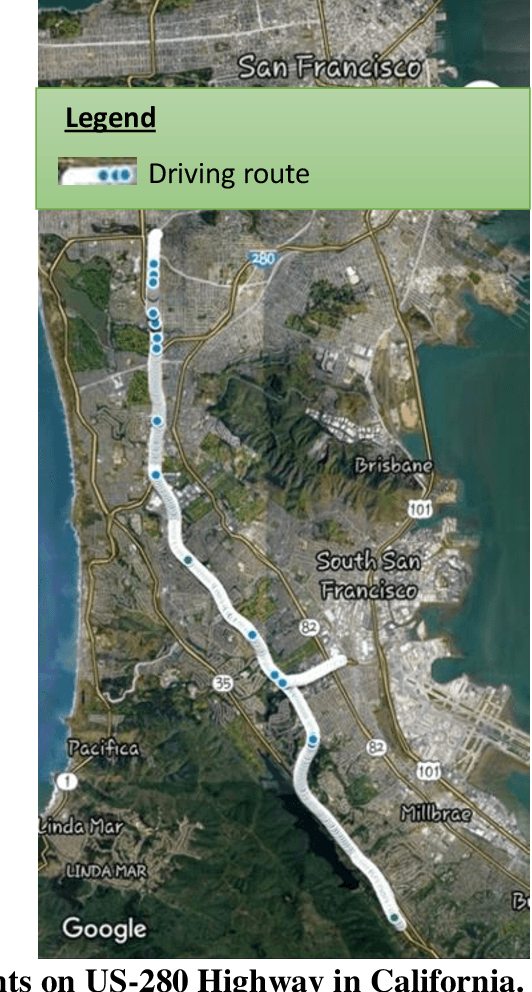Prediction-Based GNSS Spoofing Attack Detection for Autonomous Vehicles
Paper and Code
Oct 16, 2020



Global Navigation Satellite System (GNSS) provides Positioning, Navigation, and Timing (PNT) services for autonomous vehicles (AVs) using satellites and radio communications. Due to the lack of encryption, open-access of the coarse acquisition (C/A) codes, and low strength of the signal, GNSS is vulnerable to spoofing attacks compromising the navigational capability of the AV. A spoofed attack is difficult to detect as a spoofer (attacker who performs spoofing attack) can mimic the GNSS signal and transmit inaccurate location coordinates to an AV. In this study, we have developed a prediction-based spoofing attack detection strategy using the long short-term memory (LSTM) model, a recurrent neural network model. The LSTM model is used to predict the distance traveled between two consecutive locations of an autonomous vehicle. In order to develop the LSTM prediction model, we have used a publicly available real-world comma2k19 driving dataset. The training dataset contains different features (i.e., acceleration, steering wheel angle, speed, and distance traveled between two consecutive locations) extracted from the controlled area network (CAN), GNSS, and inertial measurement unit (IMU) sensors of AVs. Based on the predicted distance traveled between the current location and the immediate future location of an autonomous vehicle, a threshold value is established using the positioning error of the GNSS device and prediction error (i.e., maximum absolute error) related to distance traveled between the current location and the immediate future location. Our analysis revealed that the prediction-based spoofed attack detection strategy can successfully detect the attack in real-time.
 Add to Chrome
Add to Chrome Add to Firefox
Add to Firefox Add to Edge
Add to Edge